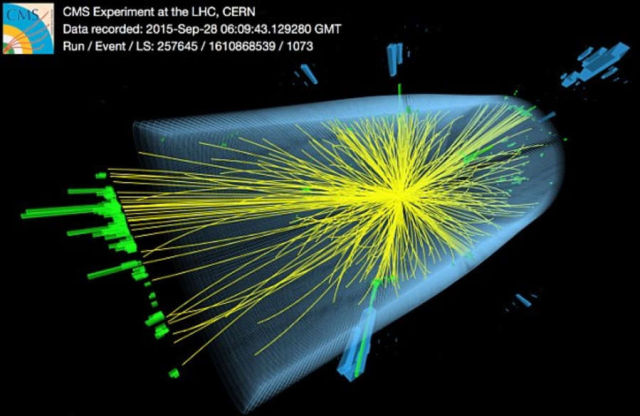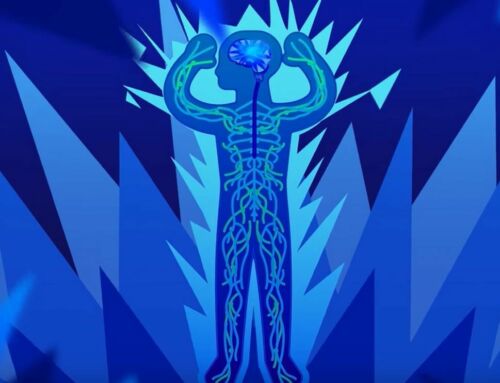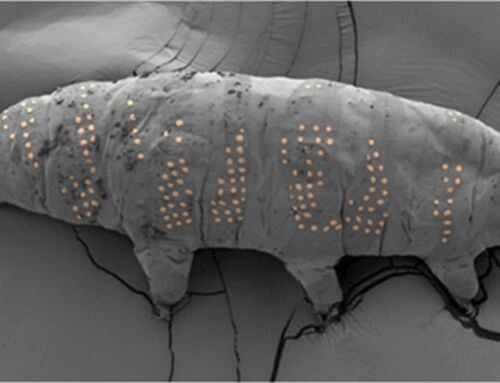CERN may have discovered signs of a mysterious particle, a new “Higgs Boson” that could revolutionize physics.
Scientists at CERN spotted at LHC (Large Hadron Collider) detectors unexplained spikes, suggesting the presence of a new particle.
Above: The LHC may have found a very important new particle. The particle could change our understanding of how the universe works. In this image pairs of photons (shown in green) are produced in LHC collisions
Top image: In this image from LHC with a graphic of lead ions colliding, scientists can study a state of matter that existed just after the Big Bang.
After more than two years, the LHC was fired up again in June. This time started smashing particles at record-breaking energy levels of around 13 trillion electron volts, which is twice the energy level used to detect the Higgs Boson.
Researchers working on the LHC experiments remained tight-lipped until December 14 when physicists packed out CERN’s main auditorium to hear presentations from the scientists working on CMS and ATLAS experiments.
“Everybody was wondering if we would witness the beginning of a new age of discovery. The answer is … maybe.”
Andy Parker, head of Cambridge’s Cavendish Laboratory and senior member of the ATLAS experiment, said:
“If the bump is real, and it decays into two photons as seen, then it must be a boson, most likely another Higgs boson. Extra Higgs are predicted by many models, including supersymmetry”.
If, according to one theory the particle is graviton, its discovery could reveal extra dimensions of space-time.
Perhaps even more exciting, it could be a type of graviton, a hypothesised particle associated with the force of gravity. Crucially, gravitons exist in theories with additional dimensions of space to the three (height, width and depth) we experience.
source theconversation






this website is just wonders upon wonders. thank you guys and happy holyday
Happy Holidays!!